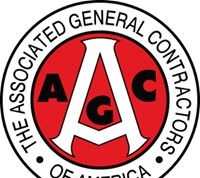NCRC Statement on the Release of 2015 Home Mortgage Disclosure Act Data
Washington, DC – (RealEstateRama) — Today, in reaction to the release of the 2015 Home Mortgage Disclosure Act (HMDA) data, the National Community Reinvestment Coalition’s (NCRC) President and CEO John Taylor made the following statement.

“It is clear from this data that much more needs to be done to increase responsible lending to low- and moderate-income communities and communities of color. While there have been some small increases in lending to minority communities, far too many communities still do not have fair access to mortgage credit. Without responsible homeownership opportunities, working families have very few avenues to climb the economic ladder.”
“The data also highlights the large volume of lending activity by institutions not covered by the Community Reinvestment Act (CRA). Those institutions are not required to serve the credit needs of communities in the same way as banks; they should be. Now more than ever, it’s critical to modernize and expand CRA to cover nonbank lending institutions.”
“It is also essential that the Obama Administration and the Federal Housing Finance Agency allow Fannie Mae and Freddie Mac to rebuild their capital reserves and end their conservatorship, with additional reforms to ensure strong oversight, adequate capital reserves and improved affordable housing goals. This will result in greater availability of responsible mortgages to creditworthy working Americans.”
The 2015 HMDA data for owner-occupied single family housing, not including manufactured housing, show the following:
- Overall, the number of loans increased for both home purchase and refinance loans. Home purchase loans rose from 3.2 million in 2014 to 3.7 million, while refinance loans rose from 2.4 million in 2014 to 3.2 million.
- For the first time since 1995, 50% of home purchase loans for single family owner-occupied homes were made by non-banks.
- There was a slight shift from 2014 in home purchase loan distribution by race. The increased volume broke down along existing racial lines.
*Black borrowers in 2014 received 5.2% of all loans. In 2015 this rose slightly to 5.5%.
*Hispanic borrowers in 2014 received 7.9% of all loans. In 2015 this increased to 8.3%.
*Asian borrowers in 2014 received 5.2% of all loans. In 2015 this increased to 5.5%.
*For the second year in a row whites did lose ground in the home purchase market, dropping from 69.1% in 2014 to 68.1% in 2015.
*Those loans missing data increased from 8.3% to 8.5%, which may explain part of the drop as borrowers move to online initiation of loans. - Black borrowers receive FHA/VA for 70% of their home purchases and Hispanic borrowers receive them for 63% of their home purchases. Low- and moderate-income (LMI) borrowers receive FHA/VA loans 53% of the time, and buyers in LMI neighborhoods receive them 50% of the time. White borrowers receive FHA/VA loans for 36% of their home purchases and Asians borrowers receive them for 17% of their home purchases.
- LMI borrowers and buyers in LMI neighborhoods used FHA lending 53% of the time and VA lending 50% of the time.
- High cost loans, where the interest rate charged is 1.5% or more above the average rate, were only 3% of all loans.
- Home purchase LMI borrowers increased their share of the market from 27.1% in 2014 to 28% in 2015, and middle-income borrowers increased their share from 25.6% to 26.1%. Upper-income borrowers fell to 44.8% of the market from 46.1% in 2014.
- Home purchases in LMI and middle-income tracts increased slightly. LMI home purchases rose from 13.3% in 2014 to 13.5% in 2015, and middle-income home purchases increased from 44.6% to 45.2%. Home purchases in upper-income areas dropped slightly, going from 41.8% to 41% of the market.
- Smaller banks reported that 11% of their conventional loans were high priced. Smaller banks were the least likely to serve people of color, but 30% of their loans were to LMI borrowers.
- Large banks have continued to retreat from lending to people of color and LMI borrowers, and in LMI neighborhoods. These communities rely more on FHA/VA lending than any other but the large bank lenders do the least amount of their business in and with these communities. Large lenders reported in 2015 that only 25.1% of their loans were non-conventional. The portion of their loans made to LMI borrowers was 23.7%, lower than other lenders, and the percent of their loans to LMI neighborhoods was also the lowest, at just 11.8%.
- Small banks struggle the most to serve minority borrowers, with just 11.8% of small bank home purchase loans going to people of color. Small banks also make by far the largest share of high cost loans across all types of lenders, at 11% of their loans. Non-bank lenders are a distant second at 2.4%.
###
About NCRC
NCRC and its grassroots member organizations create opportunities for people to build wealth. We work with community leaders, policymakers and financial institutions to champion fairness in banking, housing and business development.













